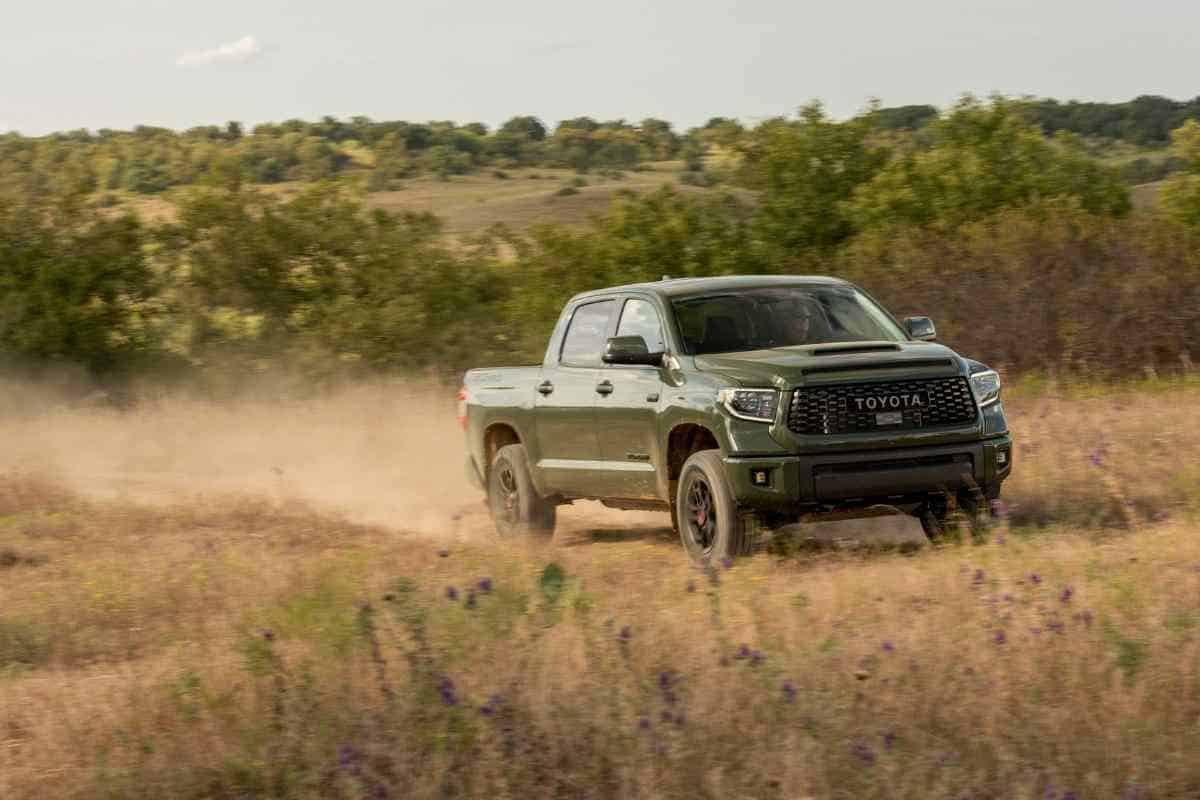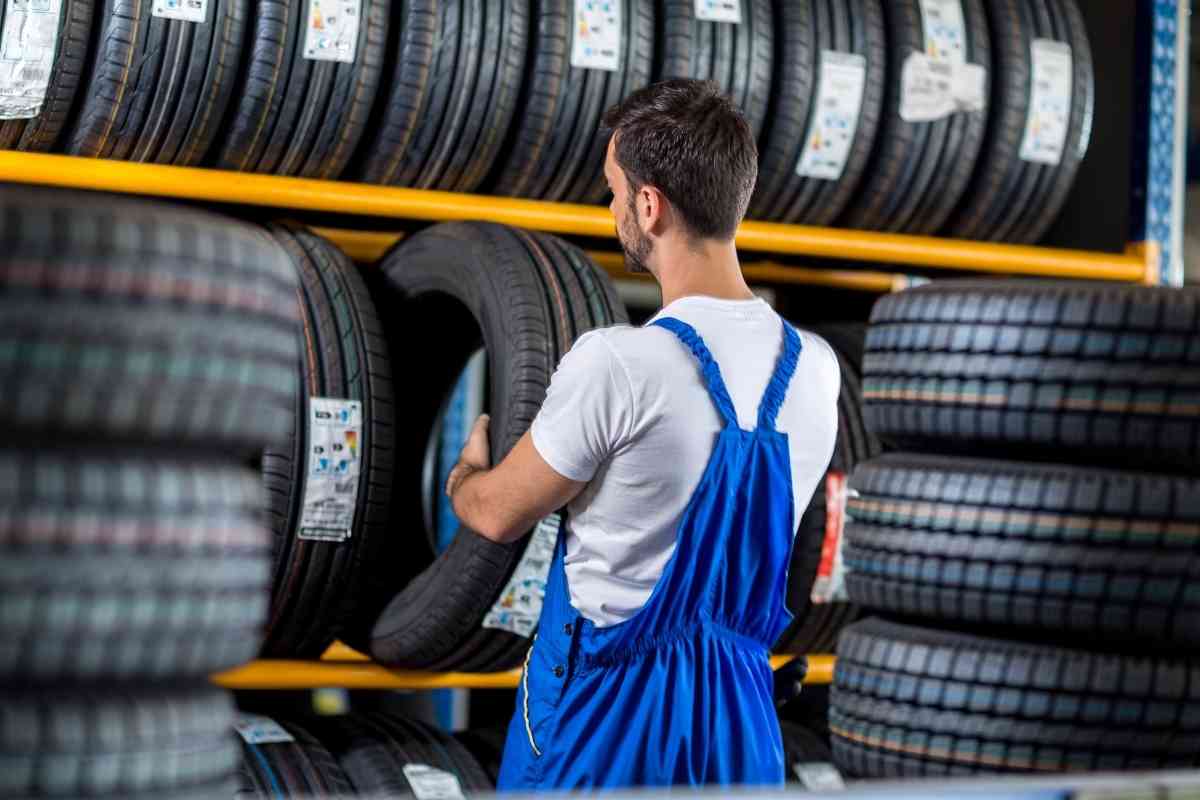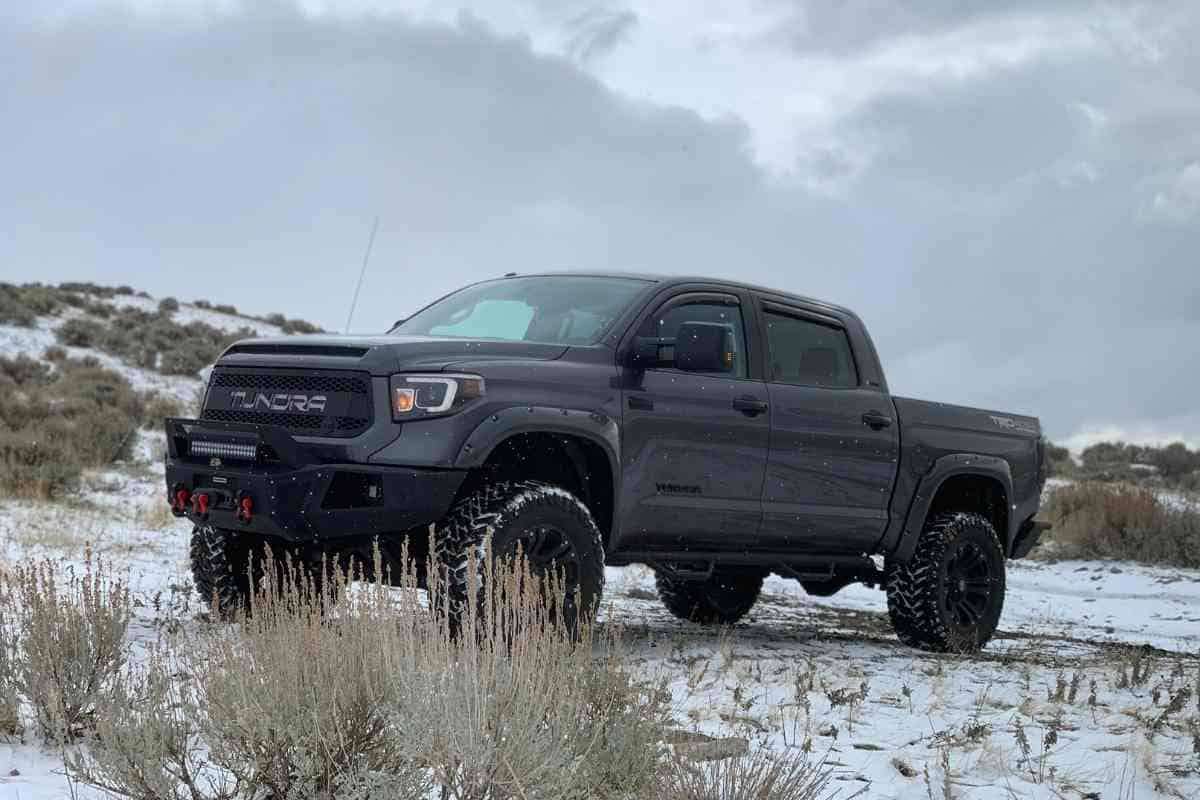What’s the Biggest Tire You Can Put on a Stock Toyota Tundra? (It’s Easy On 16-inch and 17-inch rims!)
The Toyota Tundra is a truck for those who want power and performance. It is bigger and more powerful than the Toyota Tacoma and a better choice when you need to venture off the road. Tundras come standard with a 4.6-liter i-Force V8 that generates 310 horsepower and 327 pound feet of torque.

If you need to venture more off the road, the Tundra has the power, and all you need are good tires. Larger tires will allow you to drive on rugged terrain beyond the pavement. But what size of tires can fit in your Tundra without rubbing?
What is the Biggest Tire You Can Put on a Stock Toyota Tundra?
The biggest tires you can put on a stock Toyota Tundra without a lift kit is 275/70 R16 on 16-inch rims on the first generation of the Tundra. On 17-inch rims, you can fit 265/70 R17 or 275/65 R17.
The 275/70 R16 is two-fifths wider than the factory tire and only a half inch taller, so it doesn’t need so much clearance to roll efficiently. The 265/70 R17 only adds an inch of height with no additional width to the factory tire. Lastly, the 275/65 R17 adds an inch of height and it is two-fifths wider than the factory tire.
The second generation of Toyota Tundra can take larger tires. Without a lift, you can fit 285/65 R18 and 275/60 R20 on 18-inch and 20-inch rims respectively. With the 285/65 R18, you need to trim as the tire is a bit wider than the factory tire.
These tires will fit the Tundra perfectly even if you do not do any modifications to the fenders or the suspension. Tundras are huge trucks, and they can go off the road without any issues of rubbing.
What Factors Determine the Tire Size a Truck One Picks for Toyota Tundra?
Most Tundras come in either 255/70 R18 or 275/65 R18 tire sizes. Truck owners who need larger wheels go for the R20s as special packages. When shopping for tires for your Tundra, consider the lug nut patterns as they will help you separate 4WD and 2WD tires.
Six lug patterns are ideal for 4WD trucks while five lug patterns fit 2WD trucks.

The size of tires you pick will depend on the reason for tire changes. Larger tires will enhance the look of your Tundra to make it look unique. However, bigger tires will also add to the curb weight of the Tundra. If you plan to go off the road, the bigger tires will serve you better.
Tundras have a large wheel well space. This way, you can fit bigger tires without modifications and expect no rubbing. However, if you go too big, the tire will rub against the fender.
Trucks with bigger tires are more prone to rubbing when you drive on rugged terrain or when you drive over a bump. If you go bigger than you should, your truck might have a few challenge as follows:
• The odometer and speedometer of the truck will need recalibration. This means your Tundra requires you to reprogram its computer to get accurate readings from these two devices.
• Your Tundra doesn’t have an axle to accommodate very large tires. This means that while the tires look cooler, the axle will have a challenge turning them the same way it would turn factory tires. The low-end torque will translate to slower acceleration.
• If you go too wide and too high, the tires might add significant weight to lower the mpg of your truck – and no one wants that.
The best size for your Tundra should only add about three percent height and width on the factory tires. This rule, also known as the “Plus 1” rule, notes that you can add three percent height and width of the tires without any lift or any modifications. If you still want bigger tires, you can go for a lift kit that allows you to go higher.
However, you may not find a tire that is three percent larger than the factory tire. The other important rule is that a 1-inch lift will allow you to fit a tire that is 1 inch taller. This means that a 3-inch lift allows you to pick a tire that is 3 inches taller.
However, lifting does not allow you to add the tire width. If you need to increase the width of the tire, you need to add the backspacing to accommodate the increased width.
How High Can You Go with a 2-Inch Lift Kit?
With a leveling kit, it is easier for you to install taller and wider tires. You might require some trimming to ensure that there is absolutely no rubbing, but there are no major modifications to be done.
On the first generation of Tundras, you can fit 265/75 R16 on stock 16-inch rims. This tire is only one inch taller than the factory tire, but the width remains the same. On 17-inch rims, you can fit 275/70 R17 tires without rubbing.
The 275/70 R17 is 1.5 inches bigger than the factory tire and two-fifths wider than the factory tire. You might need to trim the fender flares a little to ensure that the tires roll without any impedance. If you only drive on the highway and in cities, the tires will not rub even without trimming.
However, anyone who drives off-the-road or on bumpy areas will need to trim and cut to ensure there is absolutely no rubbing.
With a 2-inch leveling kit, the second generation of the Tundra can accommodate 275/70 R18 tires on 18-inch rims. The tire adds an inch of height and retains the width of the factory tire. You can also add 285/70 R18 tires on the 18-inch rims, but you have to do some trimming for a perfect fit.
The 285/70 R18 adds 1.7 inches in height and two-fifths in width. Further, the 18-inch rim can accommodate 295/65 R18 tires, which adds an inch of height and four-fifths width to the factory tire. With the increased width, you need to trim to ensure there is no rubbing.
On 20-inch rims, you can fit 285/60 R20 tires. This tire is 1.5 inches taller and two-fifths wider than the factory tire.
What is the Biggest Tire Size for a Stock Toyota Tundra with a 3-Inch Lift?
A 3-inch lift gives you more options with the tires you have to fit. However, even a 3-inch lift still requires you to trim if you choose wider-than-factory tires.
The first generation of Tundras allows you to fit 285/75 R16 tires on 16-inch rims. This tire is more than 2 inches taller and four-fifths wider than the factory tire. Its width might pose challenges, and you have to trim to make it roll efficiently.
You can also fit 265/80 R16 tires on 16-inch rims. This tire adds more than 2 inches of height but remains the same width as the factory tire. On 17-inch rims, you can fit 285/70 R17 tires. The tires are more than 2 inches taller and about four-fifths wider than stock tires.

For the 285/70 R17 tires, their widths might make them rub, so you need trimming and cutting to make the tires roll efficiently.
The second generation of Toyota Tundra can fit even bigger tires. On 18-inch rims, you can fit 285/75 R18, which are 2.8 inches taller and 2/5ths wider than stock tires.
The same 18-inch rims can accommodate 305/70 R18, which add 2.8 inches height and 1.2 inches width to stock tires. You will, however, need to trim to make the tires fit without rubbing.
On 20-inch rims, the second generation of the Tundra can accommodate 285/65 R20, which add 2/5ths width and 1.6 inches height to stock tires. The same 20-inch rims can fit 305/60 R20 tires, which are 2.4 inches taller and 1.2 inches wider than factory tires.
You have to trim whenever the width of the bigger tires is more than that of the factory tires.
Trimming and cutting ensures that the tires do not rub when you hit a bump or a pothole or when you drive off-road.
Closing Thoughts
If you have a Tundra model before 2007, it is part of the first generation model. These models cannot fit huge tires as the Tundra did not have as much wheel well space as it has today.
Models from 2007 form the second generation and beyond. These models fit larger wheels given that the stock rims are also as large as 20-inches. If you want to go high and wider, note that you need to add a leveling lift kit, and you also need to trim.
If you drive on rough terrain, you need more lift and more trimming.

Excellent and very informative explanation . Thank you for putting all the effort and knowledge into educating readers.